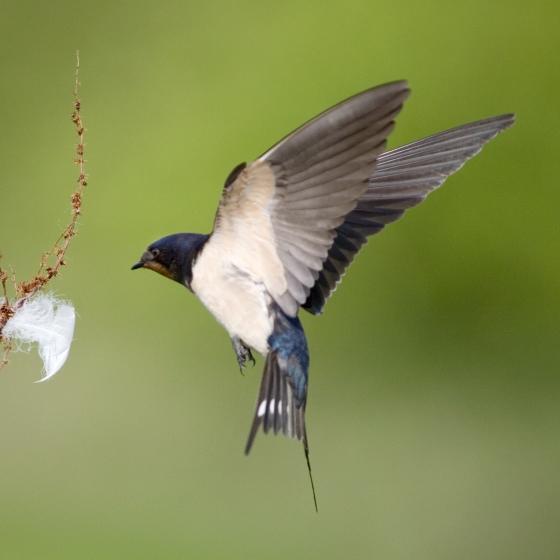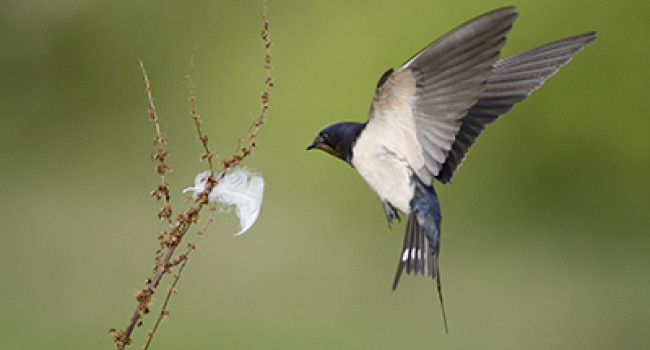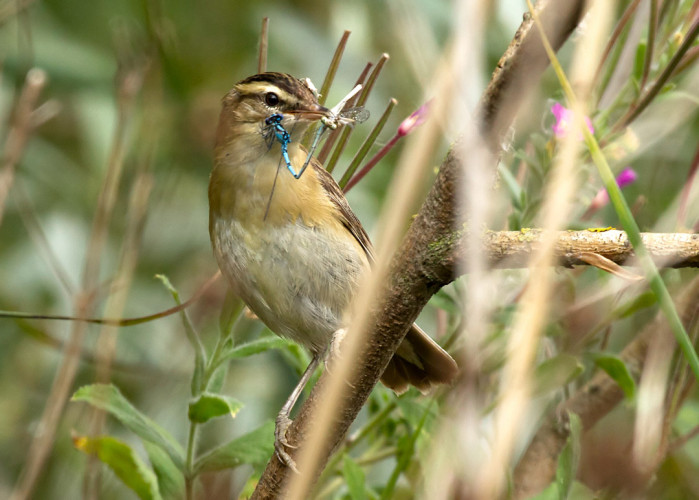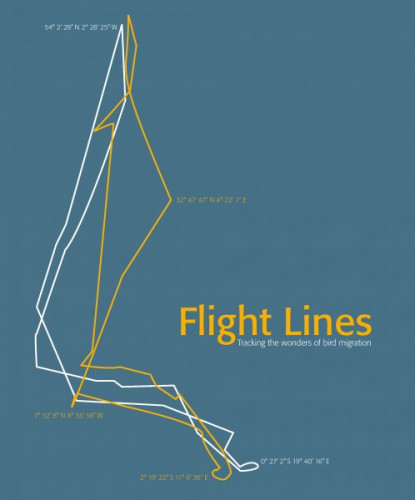Swallow
Hirundo rustica (Linnaeus, 1758)
SL
 SWALL
SWALL  9920
9920

Family: Passeriformes > Hirundinidae

The sight of an early spring Swallow with its long, forked tail, red throat and white belly signals that summer is not far away.
A long-distance migrant, many of our Swallows spend the winter months in South Africa. The first Swallows begin to arrive in the UK during March and stay here into October. In recent years a small number of birds have attempted, in some years successfully, to overwinter in the UK.
The Swallow can be found across Britain & Ireland and can be seen flying at speed just inches above its favoured grassland feeding habitat as it snatches its insect prey. UK Swallow have fluctuated sharply in recent decades, with declines seen in England, Wales, Scotland and Northern Ireland since about 2010.
Exploring the trends for Swallow
Our Trends Explorer will also give you the latest insight into how the UK's Swallow population is changing.
trends explorerIdentification
Swallow identification is often straightforward. The following article may help when identifying Swallow.
Identifying Hirundines and Swift

With their swept back wings and aerial lifestyle hirundines (Swallow, Sand and House Martins) and the similar, but unrelated, Swift often cause ID headaches. Let us help you to separate these amazing summer visitors.
SONGS AND CALLS
Listen to example recordings of the main vocalisations of Swallow, provided by xeno-canto contributors.
Alarm call
Call
Song
Develop your bird ID skills with our training courses
Our interactive online courses are a great way to develop your bird identification skills, whether you're new to the hobby or a competent birder looking to hone your abilities.
Browse training coursesStatus and Trends
Population size and trends and patterns of distribution based on BTO surveys and atlases with data collected by BTO volunteers.
CONSERVATION STATUS
This species can be found on the following statutory and conservation listings and schedules.
POPULATION CHANGE
Swallow was originally amber listed partly on the strength of a decline on CBC plots in the early 1980s, but later modelling of UK population change from CBC gave evidence of fluctuations but not of long-term decline (Robinson et al. 2003). Nevertheless, the species continued to qualify for amber listing through its 'depleted' status across the European continent (BirdLife International 2004). Following further review of its status in Europe, the species was moved to the UK green list in 2015 (Eaton et al. 2015). The trend has been broadly stable across Europe since 1980 (PECBMS: PECBMS 2020a>).
BBS data suggest shallow increases occurred in England, Scotland and Wales from 1995 until around 2010. The BBS map of change in relative density between 1994-96 and 2007-09, however, indicates that decreases had occurred during that period in Northern Ireland and in eastern coastal regions of Britain, with the strongest increases in western Britain. More recent BBS records indicate that declines have occurred in all four UK countries over the last ten years, reversing the earlier increases.
| UK breeding population |
-24% decrease (1995–2022) 
|
Exploring the trends for Swallow
Our Trends Explorer will also give you the latest insight into how the UK's Swallow population is changing.
trends explorerDISTRIBUTION
Recorded breeding in 95% of 10-km squares, the Swallow has the most extensive distribution of any summer migrant in Britain & Ireland. It is absent only from a few areas of northern Scotland and from central London. It occurs at high densities throughout Ireland.
Occupied 10-km squares in UK
| No. occupied in breeding season | 2860 |
| % occupied in breeding season | 95 |
| No. occupied in winter | 305 |
| % occupied in winter | 10 |
European Distribution Map
European Breeding Bird Atlas 2
Breeding Season Habitats
| Most frequent in |
Villages 
|
| Also common in | Pasture Farmland |
Relative frequency by habitat
Relative occurrence in different habitat types during the breeding season.

DISTRIBUTION CHANGE
Overall range size has changed little over the course of the atlases, although gains point to a small northward expansion.
Change in occupied 10-km squares in the UK
| % change in range in breeding season (1968–72 to 2008–11) | +3.1% |
| % change in range in winter (1981–84 to 2007–11) | +52.5% |
SEASONALITY
Swallows usually arrive from April onwards with birds beginning to depart in September; stragglers may be present into October.

Movement
Information about movement and migration based on online bird portals (e.g. BirdTrack), Ringing schemes and tracking studies.
An overview of year-round movements for the whole of Europe can be seen on the EuroBirdPortal viewer.
RINGING RECOVERIES
View a summary of recoveries in the Online Ringing Report.
Foreign locations of birds ringed or recovered in Britain & Ireland

Biology
Lifecycle and body size information about Swallow, including statistics on nesting, eggs and lifespan based on BTO ringing and nest recording data.
PRODUCTIVITY & NESTING
Exploring the trends for Swallow
Our Trends Explorer will also give you the latest insight into how the UK's Swallow population is changing.
trends explorerSURVIVAL & LONGEVITY
View number ringed each year in the Online Ringing Report
Exploring the trends for Swallow
Our Trends Explorer will also give you the latest insight into how the UK's Swallow population is changing.
trends explorerBIOMETRICS
Wing Length 
|
Adults | 125.6±3.6 | Range 121–131mm, N=8326 |
| Juveniles | 123±3.2 | Range 118-128mm, N=16641 | |
| Males | 126.7±3 | Range 122–131mm, N=3341 | |
| Females | 124.6±3 | Range 120–129mm, N=3795 |
Body Weight 
|
Adults | 19.9±1.8 | Range 17.2–23.0g, N=6897 |
| Juveniles | 19.9±2 | Range 17.5–22.3g, N=14764 | |
| Males | 19.9±1.7 | Range 17.4–23.0g, N=2776 | |
| Females | 19.8±1.8 | Range 17.1–23.0g, N=3157 |
Feather measurements and photos on featherbase 
CODES & CLASSIFICATION
Ring size 
|
A |
Field Codes 
|
2-letter: SL | 5-letter code: SWALL | Euring: 9920 |
For information in another language (where available) click on a linked name
Research
Interpretation and scientific publications about Swallow from BTO scientists.
CAUSES AND SOLUTIONS
Causes of change
The reasons for change are currently unclear. Although agricultural intensification is likely to be a primary driver, over-winter survival and changes in habitat on the breeding grounds may both be having an effect.
Further information on causes of change
Population fluctuations are most strongly related to variable levels of survival (Robinson et al. 2014), most likely on their wintering grounds (Baillie & Peach 1992). More particularly, annual population change has been shown to be correlated with rainfall in the western Sahel prior to the birds' spring passage through West Africa, but with neither cattle numbers nor nest-site availability in the UK (Robinson et al. 2003). Annual survival rates from RAS sites in the UK for 1998-2004 were correlated positively with mean monthly rainfall during the early austral summer in southern Africa (Robinson et al. 2008). A review of research into threats to adult survival of several hirundine species, including Swallow, identified weather conditions throughout the annual cycle as a key threat (Imlay & Leonard 2019). There is also evidence suggesting that weather conditions experienced by Swallows during winter may have carry over effects which could affect breeding productivity the following summer (Saino et al. 2012).
It is likely that, in eastern parts of the UK, the loss of livestock farming and grazed grassland, together with arable intensification, has caused the Swallow population to decline, while an increase in the area of pasture in the west and north has promoted a population increase which apparently has more than compensated for declines elsewhere (Evans & Robinson 2004). A link between regional changes in the availability of preferred feeding habitats and the regional patterns of UK population change again suggests that habitat change on the breeding grounds may explain population trend, at least partly (Henderson et al. 2007). Brood size increased up to the late 1980s, however current data show no difference in brood size compared to the late 1960s, while nest losses have increased and the number of fledglings per breeding attempt shows no trend. A Danish study over 22 years found that the number of nesting pairs and the rate at which birds made feeding visits to nests declined in parallel with declines in insect abundance (Moller 2019); however numbers of fledglings were not counted by this study. Further evidence is therefore needed to confirm whether agricultural intensification and changes in insect abundance may have been sufficient to directly affect nest productivity and hence cause population changes at local and wider scales.
Climatic warming is leading to an earlier start to the breeding season for European Swallows, and analysis of phenological data has found that the arrival date in the UK has advanced, between the 1960s and 2000s, by 15 days (Newson et al. 2016), with the laying date also advancing (see above). Facey et al. (2020) found that nestling mass was negatively correlated with temperature, although the relationship with other weather conditions was complex and fledgling body mass was less sensitive to weather, hence the lower nestling body mass does not necessarily have any subsequent effect on juvenile survival and hence on population trends. However, Turner (2009) found that there has been increased chick mortality in hot, dry summers and reduced post-fledging survival because of poor conditions for birds migrating through North Africa. A study in eastern Germany also highlighted reduced breeding success despite earlier breeding, and suggested that a mismatch between local and large-scale climatic changes may mean that, for this species, earlier breeding was not sufficient in that region to respond to climate change (Grimm et al. 2015).
Information about conservation actions
The decline of the Swallow in some parts of the UK may relate to agricultural intensification and changes of land use. There is evidence from several studies in Europe, including one in the UK, that the retention of cattle for meat or dairy farming may improve breeding performance and colony size and buffer Swallow declines ( Moller 2001 ; Evans et al. 2007; Gruebler et al. 2010; Ambrosini et al. 2012; Sicurella et al. 2014), with the presence of manure heaps also important ( Gruebler et al. 2010), and the presence of greater numbers of hayfields within 200 m of the colony increasing colony size at farms without livestock (Sicurella et al. 2014).
Artificial nests have also been suggested as a possible conservation option. In a study in Denmark, artificial nests had a low predation rate which was similar to natural nests, and showed higher breeding productivity. The author speculated that this could be due to the saving of energy and time costs from nest construction ( Teglhoj et al. 2018).
PUBLICATIONS (3)

Declines in invertebrates and birds – could they be linked by climate change?
Are the declines of birds and invertebrates linked by climate change?
Many of the detected effects of climate change on biodiversity have occurred through impacts on food chains.

Flight Lines: Tracking the wonders of bird migration
By pairing artists, storytellers and photojournalists with the researchers and volunteers studying our summer migrants, we are able to tell the stories of our migrant birds, and the work being done
Representing migration routes from re‑encounter data: a new method applied to ring recoveries of Barn Swallows (Hirundo rustica) in Europe
Links to more studies from ConservationEvidence.com
Would you like to search for another species?













Share this page